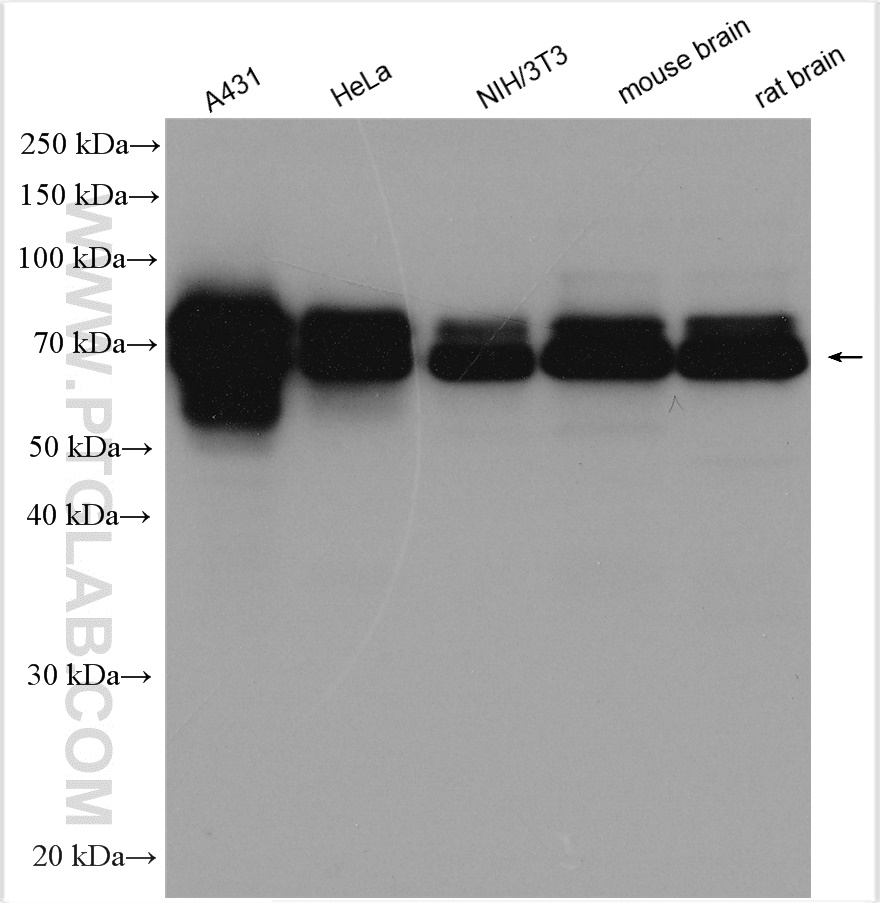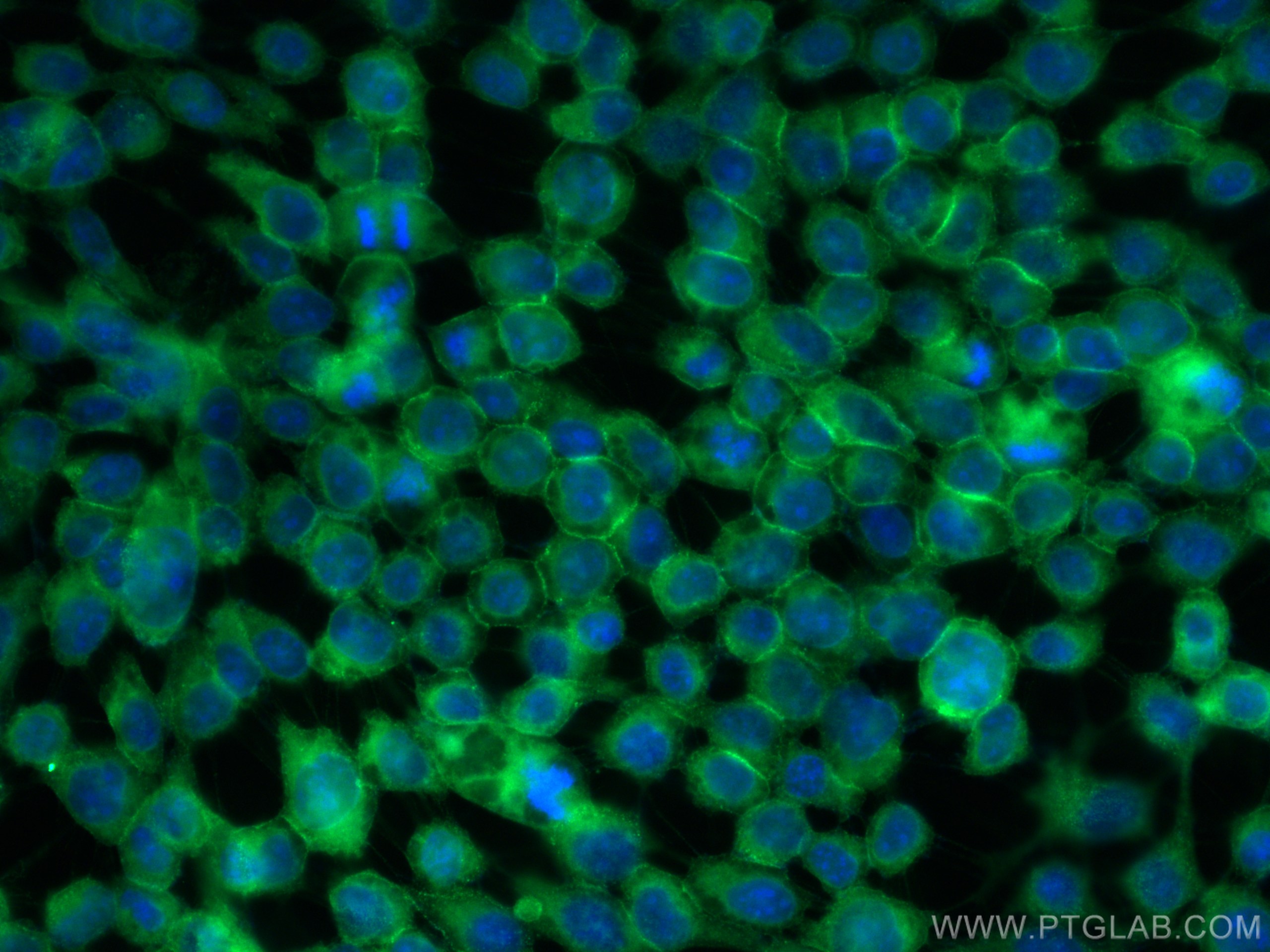验证数据展示
经过测试的应用
| Positive WB detected in | A431 cells, HeLa cells, NIH/3T3 cells, mouse brain tissue, rat brain tissue |
| Positive IF/ICC detected in | A431 cells |
推荐稀释比
| 应用 | 推荐稀释比 |
|---|---|
| Western Blot (WB) | WB : 1:1000-1:6000 |
| Immunofluorescence (IF)/ICC | IF/ICC : 1:50-1:500 |
| It is recommended that this reagent should be titrated in each testing system to obtain optimal results. | |
| Sample-dependent, Check data in validation data gallery. | |
产品信息
29594-1-AP targets NUMB in WB, IF/ICC, ELISA applications and shows reactivity with Human, Mouse, Rat samples.
| 经测试应用 | WB, IF/ICC, ELISA Application Description |
| 经测试反应性 | Human, Mouse, Rat |
| 免疫原 | NUMB fusion protein Ag31553 种属同源性预测 |
| 宿主/亚型 | Rabbit / IgG |
| 抗体类别 | Polyclonal |
| 产品类型 | Antibody |
| 全称 | numb homolog (Drosophila) |
| 别名 | h Numb, NUMB, numb homolog (Drosophila), Protein numb homolog, Protein S171, S171 |
| 计算分子量 | 71KD |
| 观测分子量 | 66-72 kDa |
| GenBank蛋白编号 | NM_001005743 |
| 基因名称 | NUMB |
| Gene ID (NCBI) | 8650 |
| RRID | AB_2923598 |
| 偶联类型 | Unconjugated |
| 形式 | Liquid |
| 纯化方式 | Antigen affinity purification |
| UNIPROT ID | P49757 |
| 储存缓冲液 | PBS with 0.02% sodium azide and 50% glycerol , pH 7.3 |
| 储存条件 | Store at -20°C. Stable for one year after shipment. Aliquoting is unnecessary for -20oC storage. |
背景介绍
NUMB plays a role in the process of neurogenesis. It is required throughout embryonic neurogenesis to maintain neural progenitor cells, also called radial glial cells (RGCs), by allowing their daughter cells to choose progenitor over neuronal cell fate. NUMB may also mediate local repair of brain ventricular wall damage. NUMB may play a role infurther understanding the NUMB function in development and cancer.
实验方案
| Product Specific Protocols | |
|---|---|
| WB protocol for NUMB antibody 29594-1-AP | Download protocol |
| IF protocol for NUMB antibody 29594-1-AP | Download protocol |
| Standard Protocols | |
|---|---|
| Click here to view our Standard Protocols |

